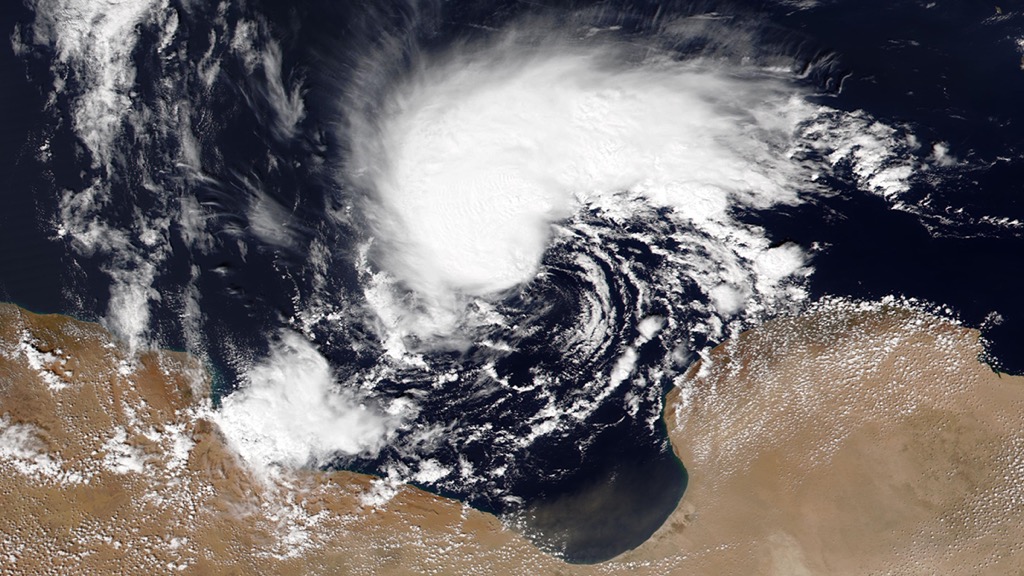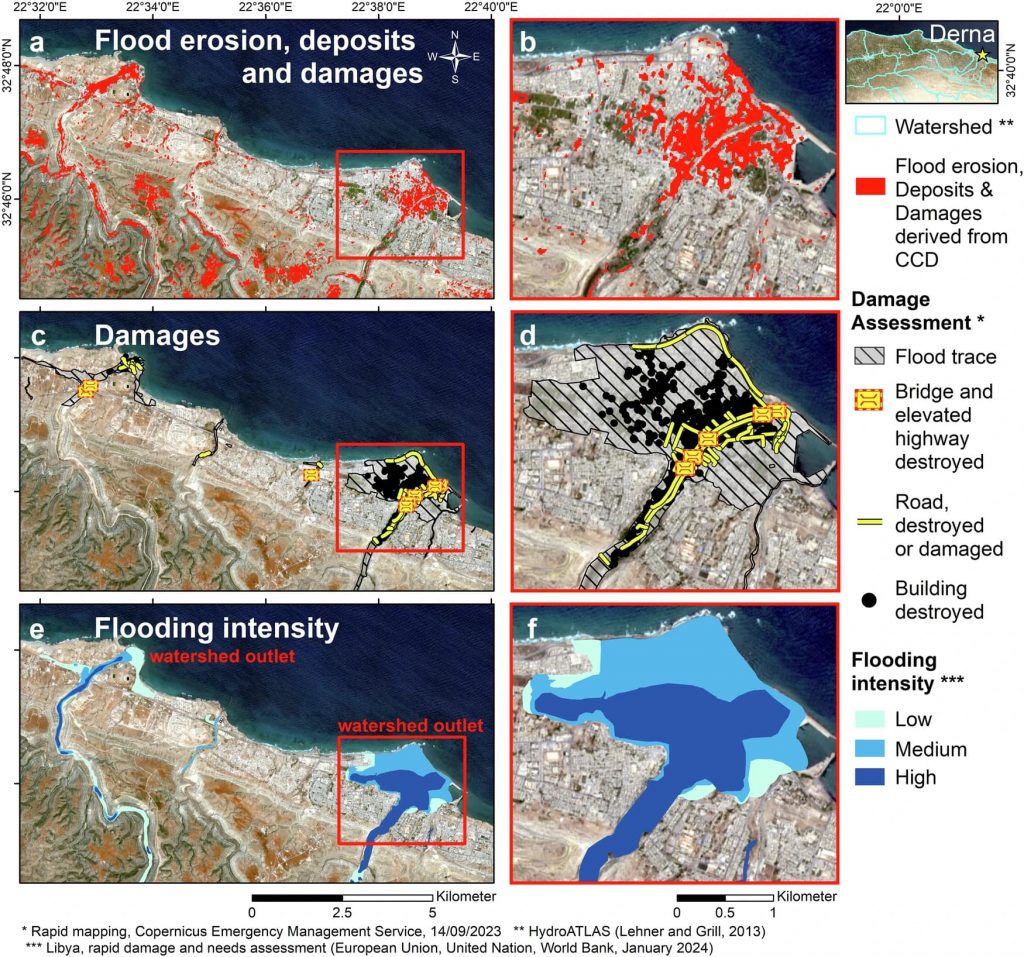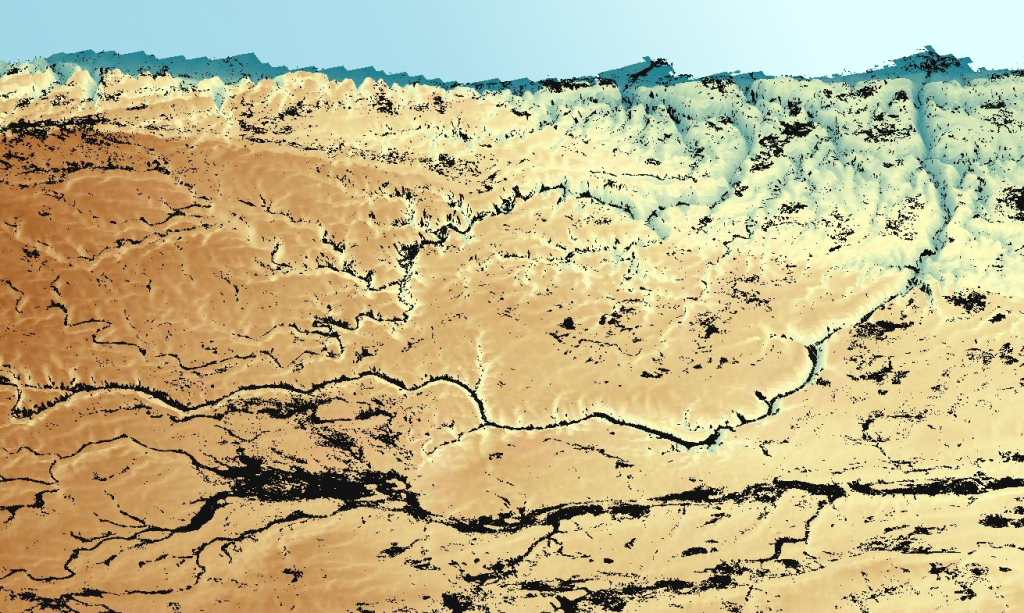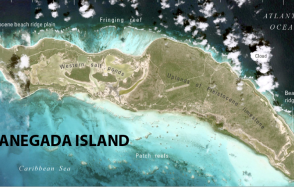Flooding in the desert, an increasingly frequent mortal danger
Researchers from the University of Southern California and the IPGP have revealed that hydroclimatic changes in North Africa due to global warming are increasing soil erosion factors, amplifying the effects of flooding in desert regions and generating mudflows that are heavily laden with sediment, as during the Daniel storm in Libya in 2023.
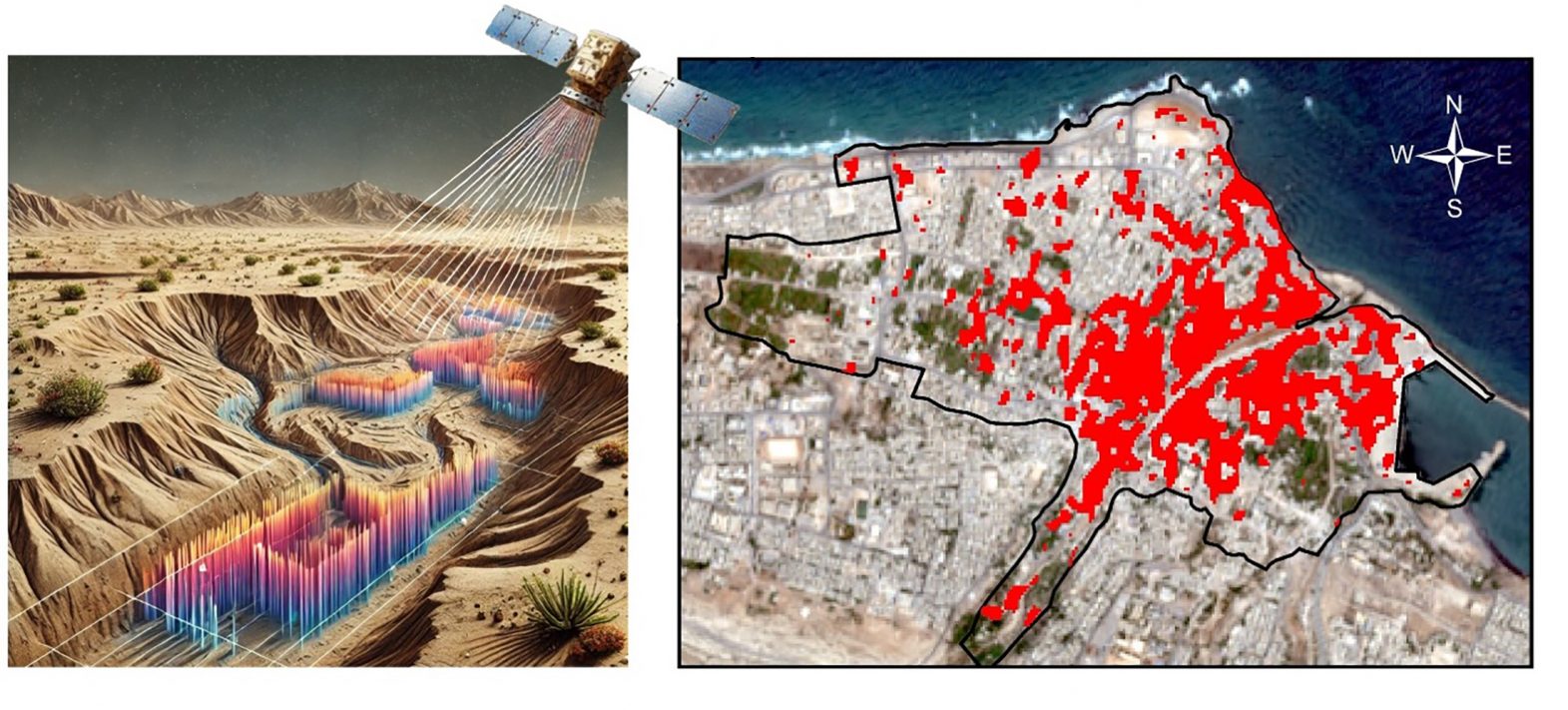
Left: conceptual detection of soil erosion in the Derna watershed using Synthetic Aperture Radar coherence. Right: damaged area in the city of Derna as measured from Synthetic Aperture Radar.





